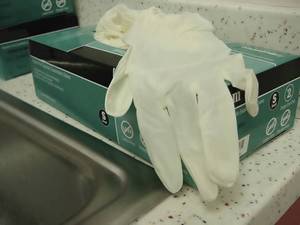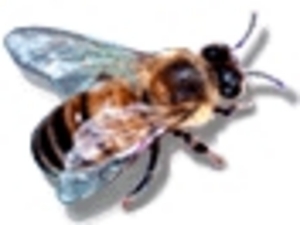My son, Nathan, was born with nerve damage, and in addition to being mentally challenged, he has suffered from seizures, practically since birth. It’s no fun watching a tiny baby spasm and writhe, while you can do little to help.
Over the course of what is now 28 years, Nathan has experienced hundreds and hundreds of seizures. Some have attacked him as he was walking, causing him to drop down in the street, others have caused him to go face-first, into the bath water. Unless you have a friend or a loved one that suffers from epilepsy, you can’t imagine the horror!
Although Nathan has taken a huge assortment of medication over the years, as the doctors tried to get his seizures under control, no combination of drugs ever helped much. What the drugs did do, however, was cause him to be sleepy, moody, uncooperative, and at times, just plain mean!
When Nathan’s neurologist approached me with the suggestion of a procedure called VNS, or Vagus Nerve Stimulation, I was certainly interested, but a little concerned, as well. He explained the technique to me, suggesting that it was possible to see far less seizures, and possibly some improvement in behavior.
During the surgery, a tiny wire is placed on the Vagus Nerve, through a small incision in the neck. A second incision, near the armpit, is used to insert a tiny generator that will send electrical impulses through the wire.
The surgery went well, and Nathan had only a little discomfort for a couple of days. A week later, he saw the surgeon. Rather than stitches, a huge clear bandage was placed over the neck incision. It was removed, revealing only a slight scar, appearing as a red line across one half of his neck. An adhesive was used on the underarm incision, so there was no need to remove it. The neck incision today appears as just a normal wrinkle in the skin of the neck, and therefore, goes completely unnoticed. The armpit scar was a little more prevalent, and still is to this day.
The generator can be seen as a small hump just in front of the underarm area, but is completely concealed while wearing clothing. The generator will likely need replaced every ten to twelve years, requiring the underarm to be reopened at a later date, and a new battery installed.
Within a week or two of the surgery, most doctors turn on the device, through a computer-type machine in their office. The device is then regulated and adjusted to suit the individual. Adjustments can be made so that the pulse of electricity is more frequent, less frequent, or it can be adjusted to send a large amount of current, or a lesser amount.
Each patient is different. Patients that have formerly had many seizures, every day, would likely need a stronger and more frequent pulse of electricity, whereas those that suffer much fewer seizures could possibly get by on less current as well as less frequency.
Initially, Nathan had a little trouble getting used to the feeling of the device in his underarm. He could feel it come on, then shut off, and come back on again. This happens all day, everyday, and he needed a few days to adjust. During those days, he had trouble resting, but it didn’t take long for him to learn to ignore it.
Nowadays, Nathan experiences much fewer seizures. Previously, he had about a seizure a week, and now, he goes months without a single incident. In addition, the seizures he does have seem much meeker and subside much quicker than before.
I’ve also seen a difference in his behavior somewhat, although we expect to see even more progress as he is weaned from more medications. Presently, he takes two different types of seizure medication, but previously, he took four different types. Upon taking him off at least one more of the medications, his behavior should improve even more.
Although Nathan might remain on one medication, to work with the VNS for seizure control, I’ve been thrilled with the results so far. It’s nice not to have to worry everyday over whether or not he’ll fall and hit his head – or worse.
If you’re considering VNS therapy, I highly recommend it, but talk to your doctor first. Go online to read more about the actual surgery, discuss side effects with your physician, then make your decision. Life with fewer seizures, though, is very nice….
Reference:
- Read more about the Vagus Nerve Stimulation: www.vnstherapy.com






